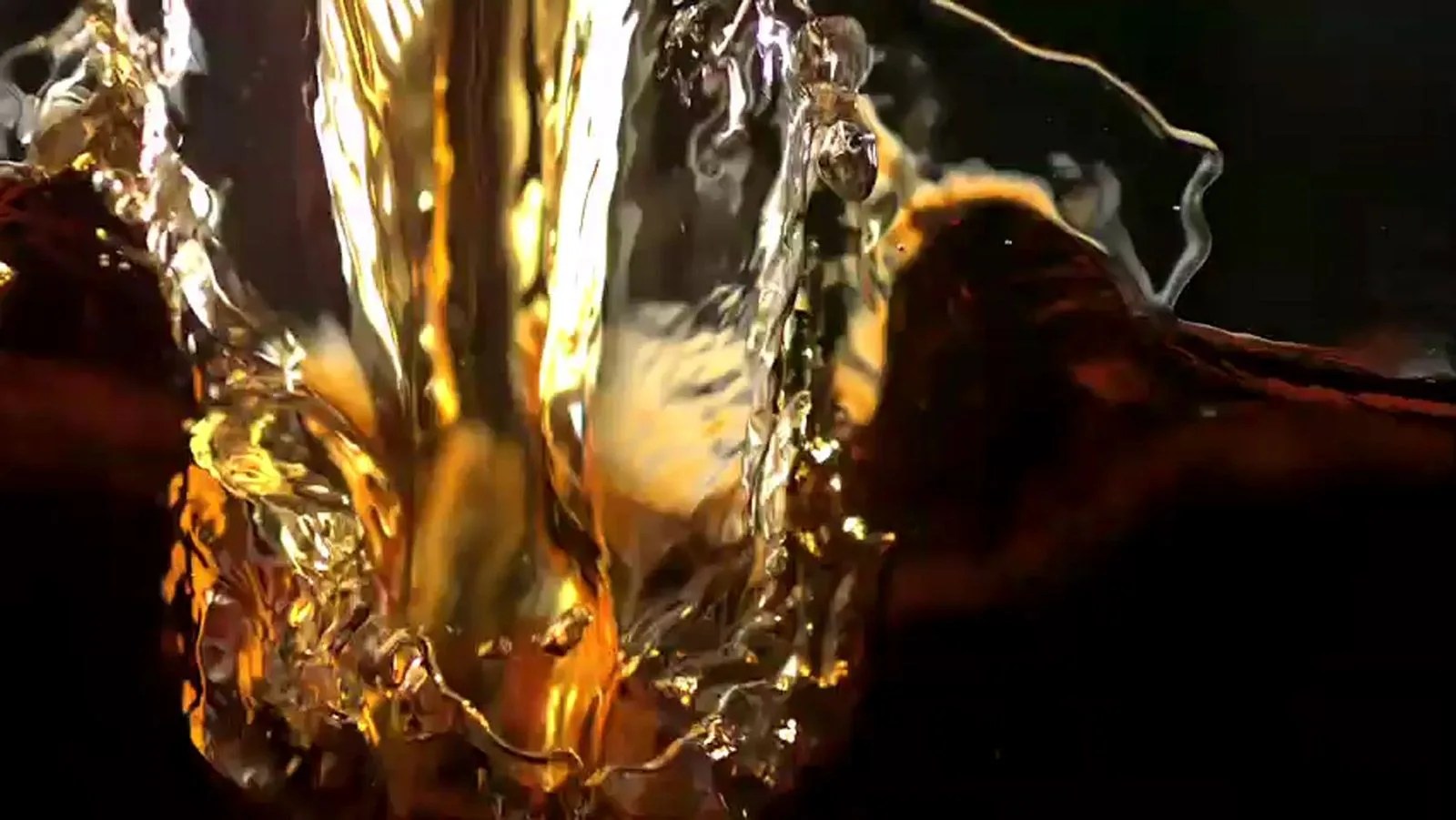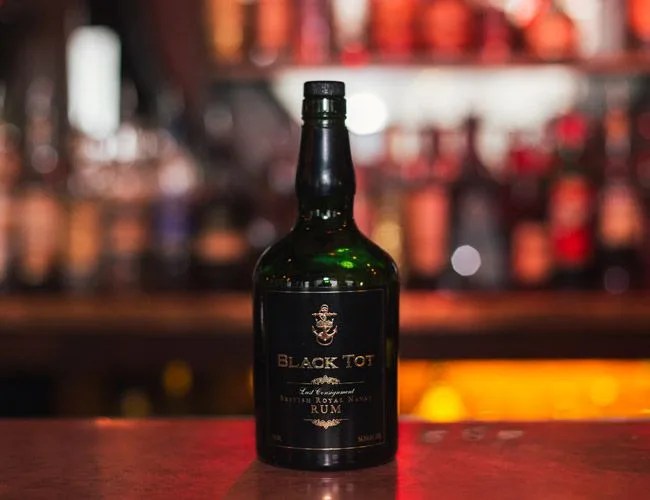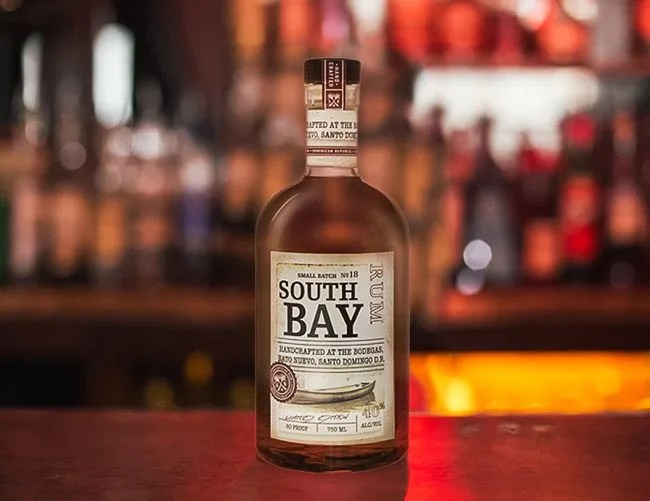
Life is hard for lovers of rum. Nine times out of ten, all they can expect to find at the local watering hole is Bacardi, Captain Morgan and Malibu, while their whiskey-swilling compadres can count on a wide selection of bourbons, ryes, single malts and so on, whether the walls of said watering hole are lined with flat screens or “reclaimed wood”. Is there no place for connoisseurs of whiskey’s older sibling? Whither dwell the single-estate rums? The agricoles? The demeraras? The soleras? The black straps?
MORE RUM: Lost Spirits Distillery’s Colonial American Rum | Tasting Gosling’s Family Reserve Old Rum | 5 Rums We’re Drinking Now
The answer, it turns out, is just beside the blinding billboards of Times Square. Down the street from the heart of the neon mess is The Rum House, an innocuous little rum and cocktail bar connected to the lobby of the Edison hotel. Owned by Kenneth McCoy (who also owns Ward III in downtown Manhattan), the bar renews the Prohibition-era rum cocktail while offering an extensive tasting menu for the appreciation of aged and rare rums on their own merits.
Naturally we jumped at the chance to take a globe-trotting tour of rums with the expert by way of an extended tasting session. With a notebook and a pen between us, we jotted down our tasting notes as we ventured, bottle by bottle, from Brooklyn to Barbados, then hopped along from Antigua to Cuba; we ventured to Scotland by way of Guyana, and had a brief stay in Mauritius. Those of you still sipping Bacardi (like it’s your birthday) ought to disembark from the cruise ship; there’s a lot to see — and taste.
Europe
For Single Malt Fans
Bruichladdich Renegade Rum

From Scotland (by way of Guyana): Bruichladdich’s Master Distiller Jim McEwan struck a tricky balance with this bottle, a rum distilled in the agricole style — that is, from sugar cane juice rather than molasses — and aged in French oak barrels on the Scottish isle of Islay. The intuitive combination of pot still distillation (later supplanted by column distillation, this was the method by which rum was originally produced) and agricole style (through which the terroir of the cane bears significant influence over the final product) suggests a coming rum renaissance — a return to, and a refinement of, the foundational method of rum distillation, through which all of the spirit’s varied forms can finally be recognized. This is both cause for celebration amongst rum lovers, and an interesting avenue for fans of single malts.
Tasting Notes: The nose exudes earth and grass, lightly underlined by more typical notes of ripe and fecund fruit. But the taste is anything but typical: the first blush is an overwhelming gust of sea air, salt, brine and kelp, undoubtedly drawn into the barrel from the winds of Islay. A surprisingly light finish reminds you that this is an agricole-style rum, as does a slow-blooming layer of caramel and prune, uniting the spirit’s homeland with its adopted guardians.
Black Tot Last Consignment British Rum

From Britain (by way of the greater Caribbean): From 1655 to 1970, sailors in the British Royal Navy received a ration of rum. Known as “tot”, the black strap rum was born of the sparest of distillation methods — meaning the liquid was every bit as pernicious in taste as the day it was invented. The Black Tot line is as rare as rums come — it’s the very last reserve of that consignment rum (the rum ration was cut in 1970). Bottles go for near $1,000, and they’ll surely creep over that horizon as those bottles vanish.
Tasting Notes: Everything you’d expect from the high seas — an extremely hot and peppery rum, abrasively at first, that coats the tongue with deeply bitter molasses and a prevailing sense of burnt leather that grows more distinct with each sip. Once that initial sting softens, dried prunes and apricots settle in, at odds with a bitterness not unlike Malta. Is that lime in the finish, or just the ghostly memory of a mug of grogg?
Samaroli Demerara 1988

From Scotland (by way of Guyana): A legendary Italian whisky bottler, Silvano Samaroli is one of the forerunners of the deindustrialization of Scotch, championing small batches and world-traveling barrel aging. Having “reached a limit” for whiskies, Samaroli turned his attention to rum, focusing largely on demerara styles (made from sugar cane grown in Guyana). Each rum is aged in a single cask in Scotland starting from the year on the bottle — 1988 in this case. Scotland’s lighter climate slows down the aging process, which occurs much more quickly in the Caribbean, for a distinct profile all its own.
Tasting Notes: The demerara style distinguishes itself in an immediately more watery mouthfeel, in contrast with the often silky, syrupy texture of other rums. This makes the rummy dark fruit flavors more contained and less intense, though no less expressive: figs and honey play on the entire tongue rather than just the rear of it, colored just slightly by allspice — and an impressive, barely there hint of bitter mamey. Leather and cinnamon assert themselves in a pronounced-yet-refined finish.
Samaroli Caribbean 2003

From Scotland (by way of Cuba): Samaroli’s other sought-after bottle of rum goes by the name “Caribbean” only in the US. Elsewhere? It’s called “Cuba.” Same bottle — same label, even, save for the one word. But what’s in a name? As with the Demerara, the rum was distilled in the country noted by the title — so we’ll say “the Caribbean”, for Signori Samaroli’s sake — and aged for 7 years in casks in Scotland.
Tasting Note: Not unlike the Samaroli Demerara, the Caribbean is lighter, with a less overpowering mouthfeel than most, with a pleasing and paradoxically light earthiness balancing out sweet, subtle notes of banana and vanilla. All this, and just a touch of spice.
North America
Rum’s Estranged Parent
Privateer Amber Rum

From Ipswich, MA: But if you’d prefer to keep it in the homeland, look no further than Privateer International. Based just outside of Boston in Ipswich, Massachusetts, Privateer seeks to restore and renew Colonial rum aesthetics. The “True American” aged rum is made from grade A American molasses and boiled brown sugar, double distilled, aged in French, American and Hungarian oak barrels and finished in Bourbon, brandy and sherry casks. Learn more about their methods here.
Tasting Notes: This is the rum for reluctant converts, its first sip bearing oaky, leathery notes more common to single malts. Gradually the molasses comes forward, the leather and oak slowly relegating to the finish rather than the fore. Then, caramel, cola and hazelnut join in, easing the drinker from refined simplicity to the versatility and variety of flavor that makes rum special.
Owney’s NYC Rum

From Brooklyn, NY: Distilled from grade A, non-GMO molasses in Bushwick, Brooklyn, Owney’s Rum harkens back to the prohibition era, when rum distillation was not uncommon in New York City. The Noble Experiment NYC, founded by Bridgit Firtle, is currently the only rum distillery in Brooklyn. (We’ll see how long they can say that.)
Tasting Notes: A fine argument for the simplicity of clear, un-aged rum, this will put your memories of Bacardi Silver far behind you. More pleasant memories of carnival popcorn and fresh vanilla ice cream play on the nose like a blissful summer. What you see — or smell — is what you get: lightly buttered popcorn and vanilla, nary a hint of paint-thinner harshness to be found. Dangerously easy to sip.
The Caribbean
The Cradle of Rum
Havana Club Añejo

From Cuba: Let’s get back to that earlier question: what’s in a name? The Havana Club brand is a gold standard for rum everywhere in the world — so much so that Bacardi has been trying to poach the name — except for the US. The distillery was founded in 1878, received its iconic name and logo in 1934, and in 1960 was nationalized by the newly minted Castro administration, who made the rum a hot commodity among the Soviets. So naturally, this is forbidden fruit — one that you can find with ease and attain for reasonably cheap at any duty-free store outside of the US (provided it’s all right between you and your god). For McCoy’s sake, we note that the Rum House does not offer tastings of this bottle. As diplomacy runs its course, time will tell whether that remains the case. (It probably won’t — what with Paris Hilton partying with the Castros and all that.)
Tasting Notes: Right on the nose is that elusive, forbidden scent, the one that beckons cigar-lovers to the Caribbean like cartoon characters gliding toward a fresh pie: Cuban tobacco. Once you’ve been lured into that first sip, it’s clear that Havana Club is everything it’s said to be. There’s salted caramel, somehow stripped of any sweetness; orange peels and cereal steeped in spiced amber; and then there’s that tobacco, overhanging like a cloud without obscuring everything underneath. The finish, light in texture but rich in flavor: bergamot, ripe plantains and a chocolate syrup that’s mostly cacao. It’s otherworldly on every level.
Ron del Barrilito

From Puerto Rico: Edmundo Fernandez’s Ron del Barrilito (or “rum from the little barrel”) is a secret treasure among rum drinkers — and in Puerto Rico, where older citizens consider Bacardi an “import”, it’s the true gold standard for rum. Fernandez buys up a quantity of Bacardi’s raw rums straight after it’s distilled, and blends them in a large wooden vat according to his grandfather’s closely guarded recipe — whereas most rum makers blend rums after they’re aged. The blended spirit is aged in charred sherry wine barrels; the “two-star” bottle is aged for three years, while the more sought-after “three-star” bottle is aged anywhere between six and ten years. At last report, the rum maker produces around 12,000 cases of the spirit annually — that, along with its remarkably low price for such a fine spirit, makes it a tough find throughout most of the year. So it’s wise to snatch it up as soon as you see it.
Tasting Notes: Initially, the nose presents an inviting bouquet of oranges and papaya, with just a trace of banana. But shortly you’ll note more austere notes looming just out of reach: pungent molasses and a distinct smokiness. The latter of the pair will sneak up on the unsuspecting drinker, a mouthful of toasted oak, smokiness masking the fruit that was promised so deceptively and razing the throat on its way down. But the sweeter notes return when you breathe, as though salving the burn, and gradually the two merge and compromise: the fruit matures into orange zest and licorice; the smoke mellows into a pleasantly strong tobacco with just a hint of leather; and that wildfire finish gives way to a firm but good-natured cinnamon kick.
South Bay Rum

From the Dominican Republic: South Bay is a newcomer to the contemporary rum market, though their master distillers aren’t — they’re Cuban distillers who migrated to the Dominican Republic. (If you’ve ever had tobacco grown in the DR from Cuban seeds, you get the idea.) South Bay Rum is solera blended and aged in Bourbon, sherry, port, wine and single malt barrels. South Bay doesn’t specify an age, so it’s likely a young spirit. But this makes it a fine, gentle sipper for beginners and a quality mixer.
Tasting Notes: South Bay is about as sweet as people expect rum to be, which is characteristic of a younger rum. But its slight immaturity is also its boon; the rum’s lightness makes for something of a solera 101 bottle, highlighting the qualities of each barrel. The nose is unthreatening, with just vanilla and caramel on display; each subsequent sip reveals butterscotch, black cherries and cola, with a finish that calls to mind vanilla and ginger.
English Harbour 5 Year

From Antigua: You wanna talk “small batch” — how about a distillery from Antigua? Unlike Barbados, which still plays host to a plethora of distilleries and sugar cane plantations, Antigua has just the one: Antigua Distillery Ltd., founded through a mass merger of rum shops in the early 20th century. Of their English Harbour rum series — each bottle of which is classified single estate, matured from 220-liter charred oak barrels over various time periods — the 5 Year stands out as a balanced and accessible entry.
Tasting Notes: Antiguan rum distinguishes itself with a uniquely light mouthfeel and flavor profile, and the English Harbour 5 Year is no different. Aromatic spice on the nose belies the dryness of the spirit; apple and cinnamon present themselves, but the primary player here is the oak, which stands on the tongue rather than coating the mouth, as is common. This dissolves into spices and cinnamon as it develops, all wrapped in a smoky finish.
Plantation XO

From Barbados: Plantation is one of the premier Barbadian rum companies; you could say they epitomize the form, with smart, balanced blends that never mask and muddle natural flavors, instead highlighting the most unique ones. The XO honors Plantation’s 20th anniversary with a blend of the distillery’s oldest reserves, aged a second time for 12 to 18 months in French oak casks.
Tasting Notes: A pleasant bouquet of figs and caramel gives a straightforward hint towards what’s in store: In typical fashion for a Barbadian rum (think Mount Gay), dark and pleasant flavors play within a creamy mouthfeel that sits nice and cozy in the rear palate — highly characteristic of double barrel finishing. Those fig and caramel notes dissolve into candied citrus and vanilla, which a sherry-smooth finish envelopes in coconut and oak.
The Real McCoy 5 Year

From Barbados: If it’s not pirates and privateers, it’s rum-runners and gangsters. The Real McCoy takes its name from one such fella. “The Real McCoy” is what Prohibition-era drinkers called rum distilled by Bill McCoy, which was revered for lacking additives like turpentine or prune juice. Similarly, this rum, distilled at Foursquare Distillery in Barbados, is praised for foregoing additives that lesser distilleries rely on (caramel, sugar, etc.). Their rum comes in three age statements — 3, 5 and 12 — and is single distilled in a combination of pot and column stills, then aged in heavily charred American oak barrels. (You’ll want to go for broke and shoot for the 12 Year — but the 5 Year is a good compromise for the budget-minded.)
Tasting Notes: This rum is the flipside to Plantation’s blended offering, heavier and darker in a typical prohibition style, with notes of candied (but not overly sweet) molasses offset by brighter fruits and florality both on the nose and in the mouth. It’s thick and rich, with a spicy finish that readies the palate for the next sip.
The Far East
The Other Side of the Equator
Pink Pigeon Spiced Rum

From Mauritius: Based upon the isle of Mauritius in the Indian Ocean, the Medine Distillery names this bottle for the endangered pink pigeon of its homeland. It looks like it would be perfectly at home in a Victoria’s Secret gift bag, but the spirit inside is not quite so tacky. It’s a quadruple-distilled single-estate rum, meaning its molasses came from sugar cane grown on a single estate, and infused with hand-picked, wood-matured Bourbon vanilla (ie, vanilla grown on an island in the Indian Ocean) for six months.
Tasting Notes: It’s an unabashedly sweet spirit — one that could easily replace your go-to dessert wine or port. Uncorking the bottle releases the most distinct scent of vanilla you’ll ever come across in a rum. The flavor of vanilla bean is well represented alongside ripe banana in a densely creamy, port-like mouthfeel, flowing freely and easily into a white chocolatey finish. A buttery cream soda coats the throat, foreshadowing more astringent cola and seltzer notes that cut the sweetness in subsequent sips. Note this bottle for next year if your Valentine’s Day was missing something.
